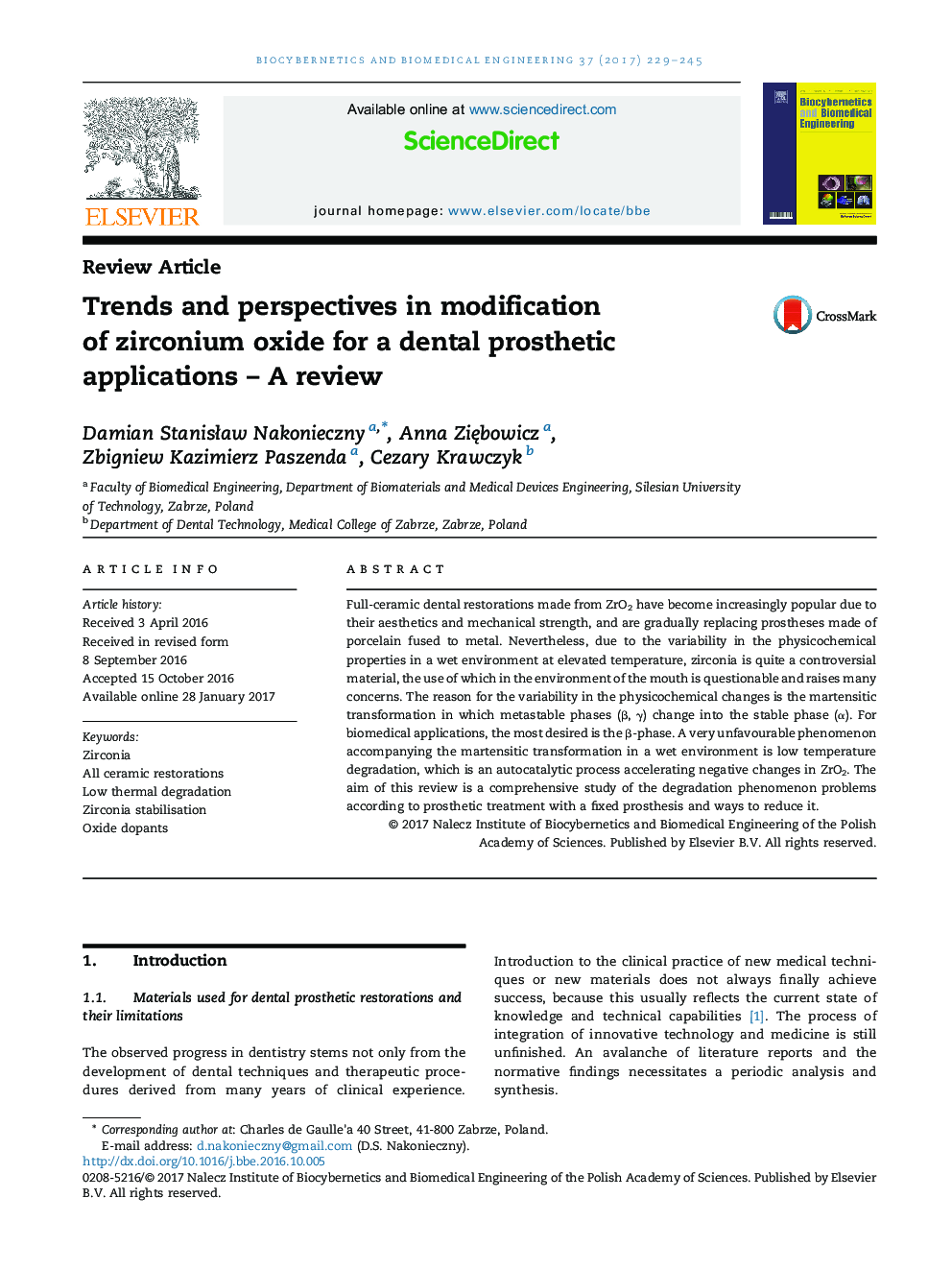| Article ID | Journal | Published Year | Pages | File Type |
|---|---|---|---|---|
| 6484240 | Biocybernetics and Biomedical Engineering | 2017 | 17 Pages |
Abstract
Full-ceramic dental restorations made from ZrO2 have become increasingly popular due to their aesthetics and mechanical strength, and are gradually replacing prostheses made of porcelain fused to metal. Nevertheless, due to the variability in the physicochemical properties in a wet environment at elevated temperature, zirconia is quite a controversial material, the use of which in the environment of the mouth is questionable and raises many concerns. The reason for the variability in the physicochemical changes is the martensitic transformation in which metastable phases (β, γ) change into the stable phase (α). For biomedical applications, the most desired is the β-phase. A very unfavourable phenomenon accompanying the martensitic transformation in a wet environment is low temperature degradation, which is an autocatalytic process accelerating negative changes in ZrO2. The aim of this review is a comprehensive study of the degradation phenomenon problems according to prosthetic treatment with a fixed prosthesis and ways to reduce it.
Keywords
Related Topics
Physical Sciences and Engineering
Chemical Engineering
Bioengineering
Authors
Damian StanisÅaw Nakonieczny, Anna ZiÄbowicz, Zbigniew Kazimierz Paszenda, Cezary Krawczyk,
